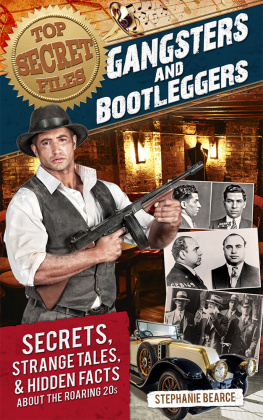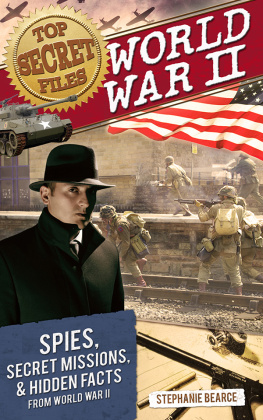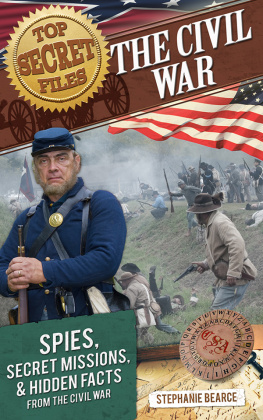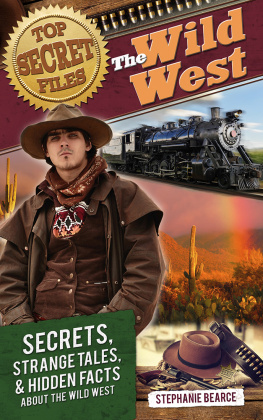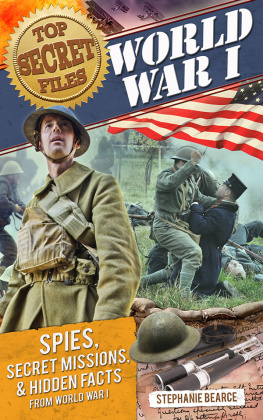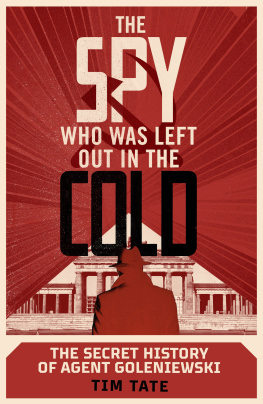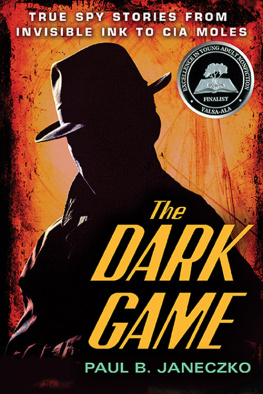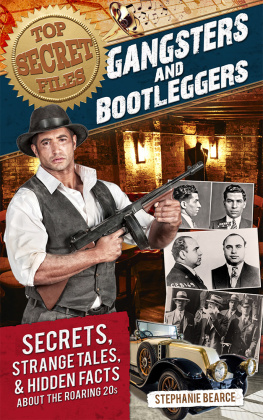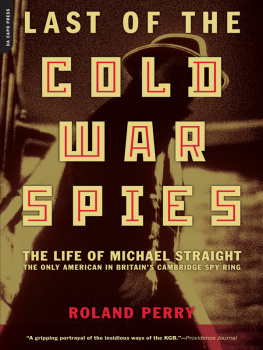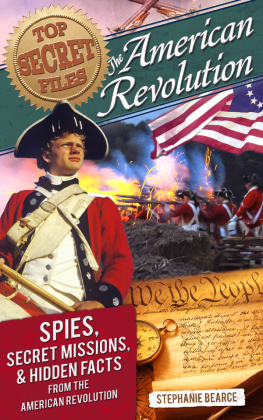

.
Copyright 2015 Prufrock Press Inc.
Edited by Lacy Compton
Cover and layout design by Raquel Trevino
ISBN-13: 978-1-61821-508-6
No part of this book may be reproduced, translated, stored in a retrieval system, or transmitted, in any form or by any means, electronic, mechanical, photocopying, microfilming, recording, or otherwise, without written permission from the publisher.
At the time of this books publication, all facts and figures cited are the most current available. All telephone numbers, addresses, and website URLs are accurate and active. All publications, organizations, websites, and other resources exist as described in the book, and all have been verified. The author and Prufrock Press Inc. make no warranty or guarantee concerning the information and materials given out by organizations or content found at websites, and we are not responsible for any changes that occur after this books publication. If you find an error, please contact Prufrock Press Inc.

| Prufrock Press Inc.
P.O. Box 8813
Waco, TX 76714-8813
Phone: (800) 998-2208
Fax: (800) 240-0333
http://www.prufrock.com |
Table of Contents
Secrets
South Korean Army Cold War soldiers from Camp Ashworth, 1964
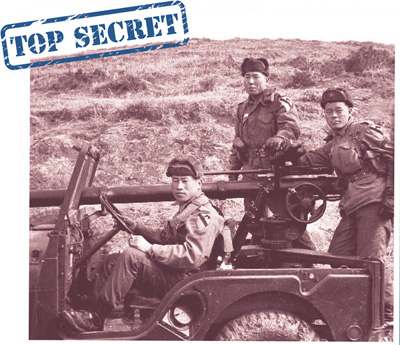
Two U.S. Army officers talk with two soldiers at a Nike missile battery, 1950s
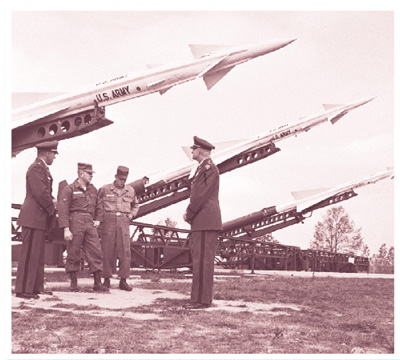
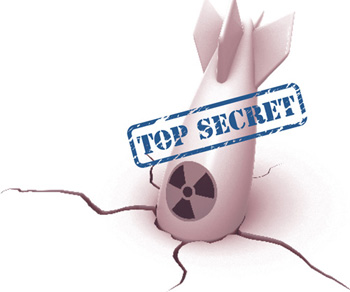
FIRST LIGHTNING
It was pitch dark when they started setting up for the test. The test tower stood tall and black, waiting for the fully assembled bomb to be loaded. At 2 a.m. on August 29, Igor Kurchatov ordered the bomb to be wheeled to the tower. By 6 a.m., everything was ready. The Soviet Union was going to test its own nuclear bomb.
The project was called First Lightning and had been in the works since WWII. The Soviets had planted spies in the American Manhattan project and had managed to steal the plans for the atomic bomb. Thats why the bomb looked so similar to the American weapon.
The Soviet scientists had meticulously prepared the test site. They had constructed buildings out of brick and wood to simulate office buildings and homes. They had built bridges, tunnels, and water towers. They had even set up an area similar to a small farm with animals like cows and chickens. It was all a part of the test. They wanted to see what the effects of the blast would be on the buildings and animals.
At promptly 6 a.m., the countdown began. Within seconds, First Lightning exploded in an unbearably bright blaze. White-hot fire engulfed the launch tower. The buildings and animals were obliterated by a giant fireball rising up into the sky and forming a huge mushroom-shaped cloud. The 20-kiloton explosion could be seen from 9 miles away. It was a total success.
It was also the start of an arms race between the United States and the Soviet Union. Each country was afraid that the other would use the nuclear bomb to obliterate its enemy. Neither country wanted to unleash that devastation on the world, but felt pressured to build bigger and better weapons to protect themselves in the event of a war. Neither side ever launched a full-scale attacktherefore it was called a cold war, and it would last for nearly 40 years.
The seeds of the Cold War were planted long before the start of World War II. Two large countries, the United States of America and the Soviet Union, did not trust each other. The two countries had very different governments. The United States believed in a capitalist system, where individual people owned businesses and land and received the profits of their work. The Soviet Union believed in communism, where the government owned the businesses and land and citizens received their homes, food, and income from the government.
But despite their very different governments, they did agree that Nazi Germany had to be stopped. So they became allies for World War II and both countries fought to stop Germany. However, even while they were fighting together, they still did not trust each otherboth sides kept secrets and spied on each other.
One big secret that the United States did not want to share with the Soviet Union was the Manhattan Project and its plans for a nuclear bomb. Leaders in the U.S. and Britain believed that if Russia learned how to build a nuclear bomb, then it might someday use it on Europe or even the United States. Both President Roosevelt and President Truman refused to explain anything about the weapon they were building to the Russians. This secrecy made the Soviet leader, Joseph Stalin, furious. He planted spies in the Manhattan Project so that he could learn the secrets of nuclear technology. This in turn made the Americans furious.
Klaus Fuchs was a scientist who had worked on the Manhattan Project. He agreed to spy for Stalin and handed over information that helped the Soviet Union begin secret work on its own bomb.
When America and Europe learned about the Soviet Unions successful testing of First Lightning, they were frightened. They were afraid that the Soviet Union would use its new weapon to start another war, take over more land in Europe and spread communism, or possibly attack the United States. The Soviet Union argued that it had to develop its own atomic bomb to protect itself from the United States.
Neither of the countries wanted to launch nuclear weapons at each other. They had seen the horrible effects that the bombs had on the people of Japan. But the countries didnt trust each other either.
The United States, Britain, France, and eight other democratic countries formed a group called the North Atlantic Treaty Organization (NATO). These countries agreed to a system of mutual defense, where if one of the countries was attacked, then all of the countries would help defend it.
The communist countries near the Soviet Union formed their own group called the Warsaw Pact. These eight countries, including East Germany, Czechoslovakia, and the Soviet Union also agreed to defend each other if one of them was attacked.
For the next 40 years, the NATO countries and those in the Warsaw Pact fought a cold war. They did not send soldiers to fight the war or drop bombs, but they sent spies to learn each others secrets. They stole plans for each others weapons and raced to see who could build the biggest army and the fastest weapons, and who could get into space first. It was a war that was fought by secret agents from the KGB, the CIA, and MI6. It was a war of secretsthe winner would be the side that could keep its secrets safe, while stealing the secrets of the other countries.
The Beard
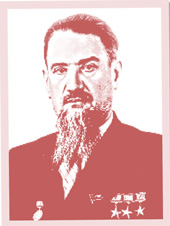
While nuclear scientist Igor Kurchatov was working on the Soviet nuclear bomb, he vowed he would not cut his beard until the program was a success. He grew a long bushy beard and continued to wear the beard even after the successful tests. He liked to cut his beard into unusual styles. Friends and colleges gave him the nickname, The Beard.
Next page

